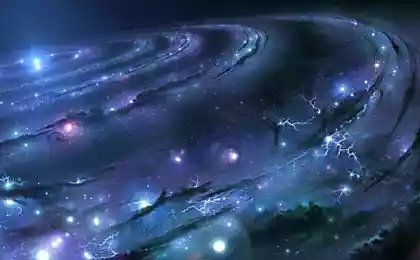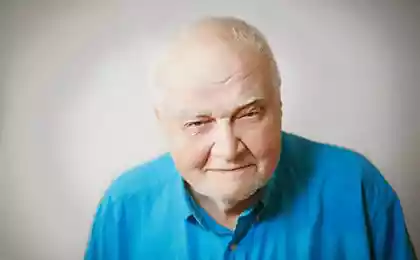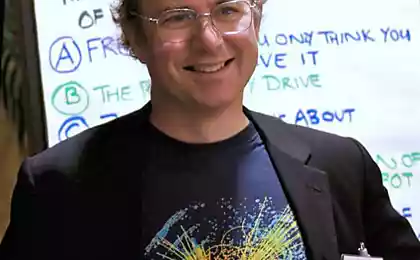801
How physics will change the world in the next 100 years
A hundred years ago, albert Einstein had just published his revolutionary new theory of gravity, the atomic nucleus was a complete mystery, and the quantum "theory" was a chain of speculation. Superconductivity, the nature of the chemical bond and the energy source of stars has baffled the best of physicists.
Gradually the secret became clear: there was the Big Bang cosmology, black holes, quarks, gluons, a triumph of symmetry and its violations, radio, television, masers, lasers, transistors, nuclear magnetic resonance, the explosion of microelectronics and telecommunications and, of course, nuclear bombs. We have come a long way. It's safe to say that 100 years ago no one even close could not have foreseen what modern physics.
Today we have a much deeper understanding of the physical world, which (according to many) provides a more stable platform for futures speculation. If you throw physics out of the past 50 years, in our time, much he will understand very soon, but if in 25 years, even faster. It is possible to think today about what will happen in 100 years, not so dumb.
In any case, to think about physics in the long term does not mean to build accurate projections in the business plan. This is not a real goal. It is rather useful exercise of the imagination. It leads us to questions that can give valuable results. What are the weaknesses in our current understanding and practices? What are the limits to growth technologies and opportunities? In some places these two issues intersect?
These surveys lead us in two main directions. One of them, in which we aim to improve our understanding of the fundamentals, is the direction of the depth. We are looking for hidden connections between different aspects of the world that seem to be divided: superficially different force — force and matter, matter and space-time, history and the law, information and action, mind and matter. Another in which we apply our knowledge, is the direction of growth. We will significantly expand the sensorium of man. We will develop samoreguliruemaja, self-assembling and self-replicating machines, they will continue the development of the Titanic computers and engineering projects. Advanced numerical and quantum simulation, supplementing the understanding of matter, will produce a revolution in chemistry, medicine and materials science — pushing the age of quantum intelligence. Artists and scientists will work together, bringing beauty into new forms.
Part one: the unification of
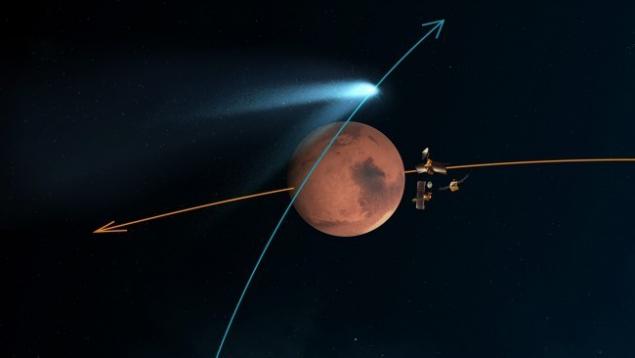
In the past, many of the greatest achievements was the harmonization (associations) relatively disparate items. Descartes linked algebra and geometry. Galileo and Newton connected celestial mechanics and terrestrial physics. Maxwell combined electromagnetism with optics. Einstein and Hermann Minkowski United space and time.
Less famous and more subtle, but relevant today, is the mathematical unification of mechanics and optics by William Rowan Hamilton. In the beginning, in the 1830-ies, it was a purely aesthetic exercise, not contain new physics. But 50 years later the ideas of Hamilton formed the basis of statistical mechanics, and 100 years later became a Central part of quantum theory.
In each of these historical associations, as well as in several others, the total was more than the sum of its parts. Unification was fruitful, successful, necessary. In this light, Frank Wilczek, Nobel laureate, describes seven other types of unification which, in his opinion, should enrich the physics for the next century.
Harmonization I: powerImagine a piece of paper cut in this way. Take a look below — it has 12 regular pentagons connected to each other. Obviously, the object should be folded into a dodecahedron.
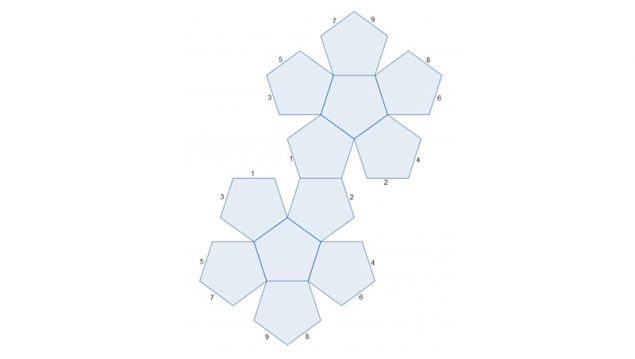
Suppose some evil spirit has divided parts are not assembled dodecahedron to make the next mysterious object.

Now to recognize what it needs to be harder. Most people who don't really think about the dodecahedrons lately, don't know what to do with it. But if you think about the correct bodies, and the dodecahedron, you can make a logical chain: "we Have pentagons, they are connected in a certain way, and thus can be folded into a dodecahedron, but someone shared a part of it." Brilliant deduction. Keep it in mind.
Our Central Theory — which many call the Standard model includes the strong, weak and electromagnetic forces, and describes a huge variety of facts — the hard, quantitative realities about the physical world — in a compact set of equations. It would be difficult to exaggerate the precision, strength, or the beauty of this set. But to physicists this is not enough. It is because we are approaching the last word of nature, we must judge what we see, by the highest measure.
From this position, the Central Theory that drives us to be better. It contains three mathematically similar, but independent of interaction: strong (which holds the nucleus together), weak (responsible for radioactive decay) and electromagnetic. Gravity is the fourth force, which is different from the rest; to her we shall return. Accurate in our description of nature, we would like to see only one rule, one fundamental principle. Three (or four) more than one, so the success we have not yet achieved.
After we organize the basic quarks and leptons in groups — divided into different forces, we get six separate groups, which is much more than we would like. It is as if we are faced with the partial realization of the dodecahedron, something divided. We would like to collect the whole thing.
Mathematics of the possible symmetries of objects in space provides us with only five different Platonic solids: tetrahedron, cube, octahedron, icosahedron and dodecahedron. This allows us to think about the fact that the dodecahedron is part of a more General system. Can we do something like that to find a hidden symmetry in the equations of fundamental physics?
It turns out that can. There are not many symmetries that fit in with the Central Theory, just as there are not many of the Platonic solids. We can try all and see how they fit into the system. After that, we understand that one candidate perfectly combines the known particles and forces. If we expand the equation in his attitude, so much symmetry that all known forces can be transformed one into another, as well as the known particles. It turns out, we have only one power and one substance. Wonderful!
These bold ideas have led to successful predictions. They testified about the existence of tiny but non-zero neutrino masses, then the masses observed experimentally. They can also provide a quantitative explanation for the relative strength of the various fundamental interactions.
This Trinity of success — the unification of the patchwork pattern of the particles of matter, the prediction of small but nonzero neutrino masses and, conventionally, a quantitative explanation of the relative strength of different interactions (strong, weak and electromagnetic) is very impressive. It's hard to believe it was an accident.
Proposed unification of the forces, however, raises significant problems. Our theory of unification predict events and particles that have not yet been observed.
And that's good. This means that these theories suggest ways in which we can enrich our perceptions of nature. It also means that they have genuine content, they can be "falsified". We can look for these undiscovered particles and events. If they are observed, we learn something new about nature. (If not, we learn something new about themselves, for example, that we were very wrong). For many of us this is familiar territory. More recently, neutrino, gluon flows, charmed quarks and Higgs particles were unfulfilled promises most Central Theory. Their discovery was crowned with the triumph of the Theory.
Not only enough protons to decay. While the experimenters were able to observe, despite heroic efforts. They will try very. The theory of Association suggests that after 100 years of physics will be swimming in data of proton decay and to clarify its most delicate moments.
Harmonization II: the power and the substance

Unification of forces, even in the ideal embodiment, would leave us with two big kingdoms of the particles. Technically, it is the realm of fermions and bosons. Poetically, we can call them the realm of matter (fermions) and the realm of forces (bosons).
Postulating that the fundamental equations have the property of supersymmetry, we exclude separation. Supersymmetry postulates a deep symmetry between these two kingdoms.
Mathematical transformations of supersymmetry is most clearly described as the movement into strange new dimensions: quantum dimensions of superspace. When a particle forces jumps in superpotato, it becomes a particle of matter. Conversely, when a part of the substance jumps into superpotato, it becomes a part of the force. Although many of the properties like electrical and color charge remain intact after the jump, its mass is changing. Therefore, we have, for example, will be strong (boson) version of the electron — selectron; similarly, squarci photino, gluino and so on.
Can we look into this superpotent and see these superpartners? The experimenters are trying to do this at the Large hadron Collider. While none of the hypothetical superpartner identified were not directly, but attempts to find them are continuing. While there are tantalizing indirect manifestations associated with unification forces. We can summarize them in a couple of iconic images:
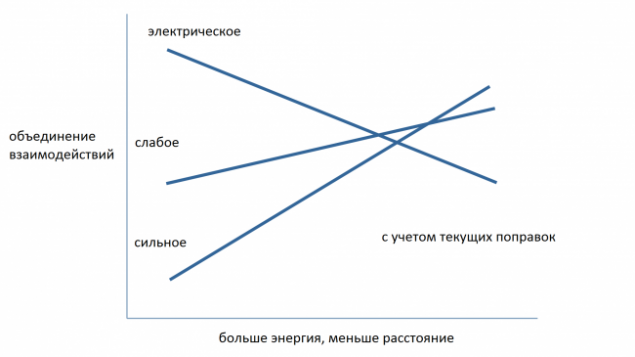
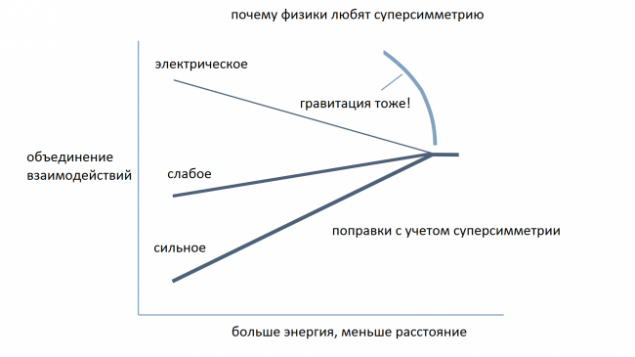
The unification of forces requires that the base strength of these interactions were equal. As we are currently witnessing, it is not. Perhaps this inequality is due to the low resolution of our probes. At its heart most major forces blurred quantum fluctuations — particularly fluctuations in quantum liquids, which create and destroy particles. We can calculate the effects of such fluctuations. For the work of such a plan I [Frank Wilczek] and received the Nobel prize. If we take into account the known particles, we Oberheim that they do not lead us to an accurate joining of forces. But if we priplyusuem to the erosion of their hypothetical superpartners, forces will come together perfectly.
Gravity also falls into focus. As it interacts between particles at ordinary energies, gravity is absurdly weaker than the other interactions. But gravity is directly responsible for energy, and we find that if we extrapolate its behavior to extreme energies, where the unification with the other three forces, gravity has comparable power.
This stunning success that meets two of our first harmonization, can not be accidental. In line with this, I think we will see a supersymmetric partners in over 100 years. Their study will open a new Golden age for particle physics.
Unification III: space and matter
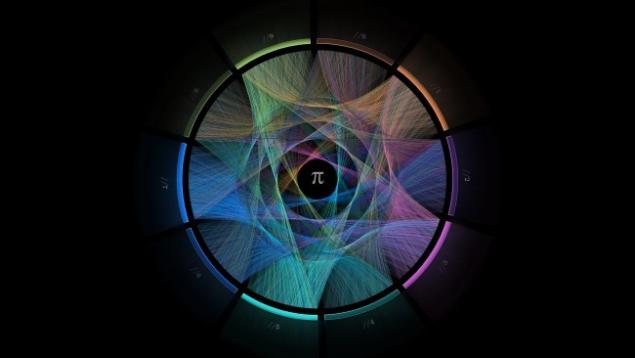
An approximate equality of forces of gravity with the other interactions is a powerful argument in favor of what should be a unified theory that combines all four forces.
String theory may offer a framework within which can be achieved unification of the four forces. In this direction was done a staggering amount of work, but the results are still inconclusive. Be a disappointment if the string theory in the coming years will not find the close contact with the reality we observe in our experiments. There are many possibilities, including hints of additional spatial dimensions, opening any fundamental strings (from the Big Bang or produced in accelerators) or calculation are known, but the mysterious quantities in the framework of the Central Theory.
With great certainty we can expect "operating" the intertwining of matter and space-time. Astronomy of gravitational waves is hiding just around the corner.
Since the matter is quite difficult to significantly bend space-time, gravitational waves, in General, open a window to the most extreme and violent events in the Universe. Detector, LIGO II will soon begin work; he must have sufficient sensitivity to detect signals from neutron stars and merging black holes. Known technologies will support the future generation of advanced detectors of gravitational waves.
I expect that gravitational waves will become a powerful and flexible tool for astrophysicists and cosmologists. Many sources will be identified, and our knowledge of neutron stars and black holes will reach a new level of detail.
Unification IV: origin and evolution
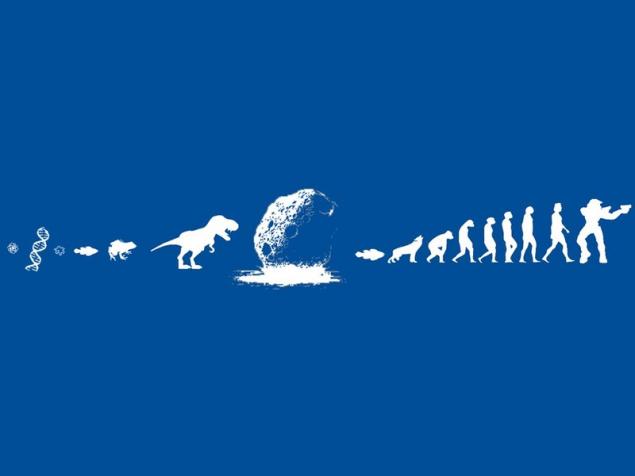
Currently, our basic laws are dynamical laws. They describe how over time the current state of the world evolyutsioniruet to another. They can also, in principle, to extrapolate back in time.
Such procedures for the prediction and reconstruction can be impractical or impossible for several reasons. On the one hand, we can't observe everything that exists. Some part of the Universe so distant that even the light from them has not reached us, which restricts our view such that "the horizon". Another reason is the limitations of quantum mechanics: at its core wave function cannot be explored without violating it. Finally, small uncertainties in initial conditions grow over time, compounding these difficulties. So, for example, it is difficult to predict the weather.
A large part of the art of physics (including thermodynamics and statistical mechanics, not to mention the physical sectors of the engineering industry) is to seek ways around these restrictions. In addition to the inaccessible and cumbersome descriptions of the complete state process interfere with developing concepts and objects that evolve, sometimes in unpredictable ways. Using computers is an art, undoubtedly, will achieve significant progress in the next 100 years. But horizons, quantum uncertainty and sensitivity to small changes in initial conditions can not be neither clarified nor resolved.
If you set aside the practical aspect, the tension between the "divine eye" on reality, which perceives it as a whole, and the "ant view" of human consciousness, which perceives reality as a sequence of events in time, remain a recurring theme in natural philosophy.
Since Newton's point of view of an ant dominates in fundamental physics. We divide the description of the world on the dynamic laws that, paradoxically, live outside of time, and the initial conditions under which these laws operate. Dynamic laws don't define what the initial conditions describe reality.
This division was extremely useful and pragmatic success. But, on the other hand, it left us far from full scientific understanding of the world as we know it. Saying "things are such because they are what are the" raises the question: why these things are so, and not some other?
In the light of the theory of relativity point of view from the divine position seems more natural. We investigate space-time as a single whole, different aspects of which are connected with symmetries, which is inconvenient to Express on the background time slices. Hermann Weil has very accurately pointed this point:
"The objective world simply exists, it's not happening. Just a glance of my mind, clinging to the lifeline of my body, animates part of this world as floating in the space of the image, constantly changing with the times."
I predict that after 100 years, the vision of the Weyl — which, in fact, dates back to the ancient Greek philosophers Parmenides and Plato — will be fully justified, as the fundamental laws will no longer admit arbitrary initial conditions. "What is" and "what's happening" will be inseparable aspects of a single transtemporal reality.
Unification V: action and information
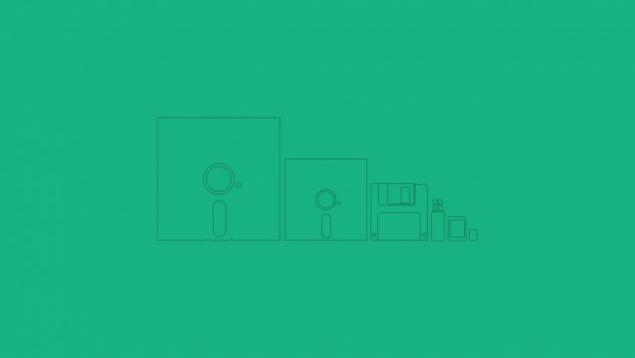
Information plays an increasingly important role in our description of the world. Many of the terms that arise naturally in the discussion of information that have distinct physical character. For example, we often talk about the density of information, the flow of information. Abstract at first glance, the notion of information does not seem linked to specific aspects of physical reality.
Looking deeper, we find that there is a far-reaching analogy between information and a specific physical quantity, namely the (negative) entropy. This is already noted in the original work by Claude Shannon, where he introduced modern technical definition of information. Currently, many discussions microphysical origin of entropy and the foundations of statistical mechanics in General — start with discussion of information and ignorance. I think it is fair to say that harmonization of linking physical entropy and the conceptual amount of information has already occurred.
Entropy, in turn, has a mysterious connection with the value effect, which we use to formulate the fundamental laws of physics. Roughly speaking, the action is what you get from entropy, letting time be imaginary. Unfortunately, the evidence in this regard are indirect. In other words, we don't yet understand it correctly.
I suspect that this relationship is very close, and in the next hundred years will be the main principle, and therefore the dynamic law of physics.
Unification VI: mind and matter
Although many details remain unclear, it seems that it would be fair to say that the metabolism and reproduction, two of the most characteristic features of life at the molecular level, is widely understood as physical processes. Francis Crick, one of the discoverers of the structure of DNA, proposed the "astonishing hypothesis" that one day it will be possible to understand the underlying psychology, including biological cognitive processes, memory, motivation, emotions, comparable to the physical level.
You can call it a "reduction" of mind to matter. But mind remains mind, and his understanding is hardly simplified in case of reduction to the physical. It would be interesting to understand how it works, but, what is difficult!
As for me, much nicer and more appropriate to consider this amazing hypothesis as the expectation of a variety of facets of the behavior of matter. Given all the incredible, what can we learn from the physics of the matter, I'm sure we will have a lot of work.
100 years of biological memory, cognitive processing, motivation, emotions — all this will be clear at the molecular level. And if the physics will learn to describe matter in terms of information as we discussed earlier, the range of ideas will be closed. The mind will become much more tangible and matter will become more like the mind.
Part two: the future of video
The creation of things (micro)Quantum revolution has allowed us finally to know what is the matter. The Central Theory ends, from a practical point of view, the analysis of matter. Using it, we can draw conclusions about what types of atomic nuclei, atoms, molecules, and stars, exist. We can also safely organize the behaviour of large assemblies of such elements and to assemble the transistors, lasers, large hadron colliders. The Central equation of the Theory has been tested with high accuracy under more extreme conditions than required by the experiments in chemistry, biology, engineering or astrophysics. Although it is, of course, there are plenty of things we do not understand we understand the matter, of which are faced in everyday life — even if we are chemists, engineers or astrophysicists.
Are there materials that can support space elevators? If there are superconductors that work at room temperature? Will we be able to outdo Moore's law? These chemical matters, as well as new, will be able to solve the computers, as they have already decided for aircraft design: complementing and eventually supplanting the laboratory experiments with calculations. Calculations, in fact, can replace experiments with the design of useful materials, catalysts, drugs, empowering and opening new spaces for creativity.
To the extent that traditional chemistry will be through innovation, border controlled miniaturize will move many orders of magnitude forward. In recent years we have seen the beginnings of the first principles of nuclear physics. Recently we reached an important milestone, the difference of the masses of the neutron-proton was calculated with high accuracy. The calculation of many nuclear properties will achieve errors of <1%, allowing accurate modeling of supernovae and neutron stars. Physics learn quality control of the atomic nuclei, as has learned to manipulate atoms. This will allow you to create ultra-dense storage of energy and high-energy lasers.
Creating things (meso)
Modern computers are inherently two-dimensional. They are based on chips that should be carried on in perfect purity, as any mistake could be fatal to their operation. If they are damaged, loss of function will be irreversible.
The human brain is different in all respects: it is three-dimensional, is performed in a poorly controlled environment, can work with errors and injuries. There are strong incentives to achieve these capabilities into systems that will inherit the density, speed, and scalability of semiconductor technology, and there is no obvious barrier to it. Thus, three-dimensional, steady and samoreguliruemaja computers will be developed in the next 100 years. In the process of designing these functions, we will also learn a lot of lessons on neuroscience.
Similarly, we can ask to create machines in the image and likeness of the human body and computers with the brains of people. We will strive to create self-assembling, self-replicating and Autonomous creative machines. Their design will inherit ideas to both technical and biological world.
Creating things (macro)Combining these ideas, we will come to superstructure engineering: machines will create other complex machines from raw materials with minimal human supervision. This strategy will allow you to maintain exponentially ambitious projects such as converting the vast deserts into a giant computer (as imagined Olaf Stapledon) and giant energy collectors (as introduced by Freeman Dyson).
Also, Freeman Dyson presented a "Dyson sphere", which collect most of the star power in its surrounding shell or cloud of collectors to then used advanced technological civilization. Although the prospects of their creation is too vague, using much of the solar energy on the Earth can become a necessity for human civilization, if we want to move away from carbon fuels.
Fortunately, it seems quite possible that in 100 years we will learn how to direct a significant portion of the sun's energy for our own goals.
Augmented senses
The senses of the people is far from perfect. Consider, for example, colour vision.
While electromagnetic signals coming into our eyes contain a continuous range of frequencies, and polarization, what we perceive as "color" is a rough code, in which the power spectrum reducing to three points, and the polarization is ignored. If you compare it with our perception of sound where we can accurately analyze the frequency and distinguish between tones within a chord, the perception of color is poor. Furthermore, we are insensitive to frequencies outside the visible spectrum, including ultraviolet and infrared. Many animals can see much better. There are a lot of useful information about our environment — not to mention the opportunities for data visualization and art — which will be available, we expand the range of color vision.
Modern microelectronics offers interesting opportunities to access this information. Using appropriate transformations, we can encode it in our existing channels in the form of a sort of induced synesthesia. We can greatly extend the human sensorium, opening the doors of perception.
Physicists often — and rightly — admire the beauty of their concepts and equations. On the other hand, people are more visual creatures. A fruitful and fun resources to use modern signal processing and computer capabilities to translate these beautiful concepts and equations of physics in a new form of art. Physics will be able to demonstrate the beauty of equations to the General public, and people can enjoy it too. In the future artists and scientists will work together, creating new masterpieces of extraordinary beauty.
Quantum feeling, quantum consciousness,Quantum mechanics points us in the direction of the invisible wealth. Perhaps the most interesting quantum effect is entanglement. But confusion is a very delicate process that is difficult to observe, so our study of this Central function of the quantum space is just beginning. Will open new sources for observations, a new state of matter. The measurement of entanglement using entanglement will be the major branches of physics.
Quantum computing require careful management involvement, and diagnostics of quantum computing will rely on methods of measurement of involvement. Quantum computers that support thousands of qubits, would be a real and useful.
Artificial intelligence will offer new and strange possibilities of life and mind. Personality, able to accurately record their condition, can introduce cycles to relive the pleasant moments of life again, for example. Quantum intelligence will go through a superposition of "mutually contradictory" States or to explore different scenarios in parallel. Based on reversible computing, such intelligence will be able to mentally return to the past and to multiply the past and present.
Who knows, maybe quantum consciousness will help us to understand quantum mechanics. published
P. S. And remember, just changing your mind — together we change the world! ©
Source: hi-news.ru
















